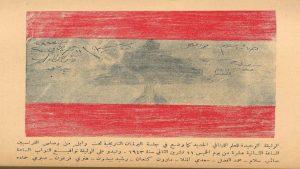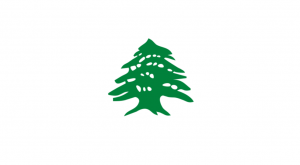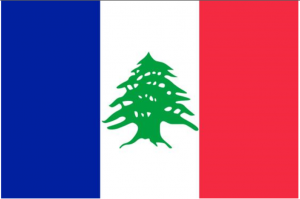The History of the Lebanese Flag

The Cedar tree is the traditionally tree that is symbolized with Lebanon nationality. In the 18th century the
Maronite Christians used a white flag with the cedar tree, with reference to the Bible (Psalms 92:12, “the righteous flourish like the palm tree, and grow like a cedar in Lebanon”). Later, when Lebanon was under French mandate, the French tricolor was used with a cedar tree in the middle. There is a reference in Smith 1982 to the colors, “The red and white colors are those associated, respectively, with the Kassites and Yemenites, opposing clans that divided Lebanese society between 634 and 1711”.

The Lebanese Flag consists of three horizontal bands, red, white, and red, with a green cedar in the center, i.e. the white band that amounts to the size of both red bands put together. The tip and root of the green Cedar both stretch towards the edge of the red areas. The red bands symbolize the pure blood, shed in the aim of liberation. The white band symbolizes peace. As for the green cedar, it symbolizes immortality. The Lebanese flag was raised in Bashamoun on the 21st of November 1943 at 11:20 pm. It is believed that this same

flag is now kept in the National Museum, although it may have been transported to the Governmental Palace in Bteddine.
At independence, Lebanon used as national flag the French national flag (vertically divided blue-white-red) with a cedar in the middle. On 11 November 1943, street demonstrations took place because the French authorities had jailed Presidents Bechara al Khoury and Riad al-Solh as well as other Ministers. Seven Deputees – Henri Pharaon, Maroun Kanaan, Saêb Salam, Sabri Hamadé, Rachid Beydoun, Saadi al-Mounla, and Mohamed al-Fadl – forced an entry into the Lebanese Parliament, where they decided to design a new national flag for Lebanon. The new (and current) national flag was designed by Henri Pharaon.
In 1979, the Minister of National Education, Boutros Harb, decided that 21 November should be the National Flag Day.
The Lebanese Constitution article prescribing the flag says:
Part I – Fundamental Provisions
Chapter I – The State and its Territory
Article 5 – The Lebanese flag is made of red, white, and red horizontal stripes, with the cedar in green in the center of the white stripe. The size of the white stripe is equal to the size of the two red stripes together. The cedar is in the middle, its apex touching the red upper stripe and its base touching the lower red stripe. The size of the cedar shall be equal to one third of the size of the white stripe.
What is the meaning behind the colors of the Lebanon Flag?
Color
White represents snow and is a symbol of peace and purity. The country has had to endure many invaders over time, and the two red stripes symbolize bloodshed during this time to preserve the country from invaders. The Mountains of Lebanon Cedar inspired the cedar tree. Cedars are a common tree in Lebanon and it features centrally on the flag. It symbolizes eternity, holiness, peace, and longevity.
Shape
According to Article 5 of the Lebanese constitution, the flag of Lebanon should consist of three horizontal stripes, two red stripes at the top and bottom with a white stripe at the center. The width of the middle white stripe should be equal to that of both the red stripes. At the center, the green cedar tree should take up 1/3rd of the white stripe, with the top and base of the tree touching both red stripes at either end. The general ratio of the flag is 1:2:1.
References:
- FOTW Flags Of The World website
- https://www.edarabia.com/lebanon/flag/
